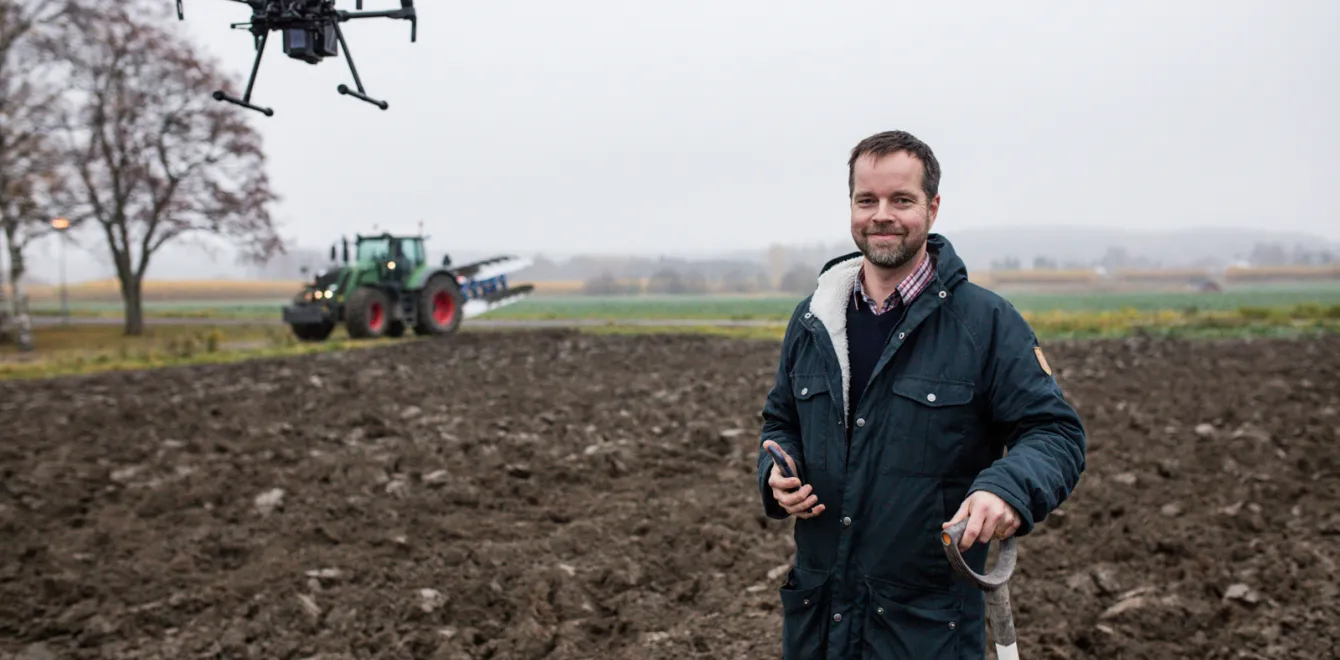
Testbed for digitalised agriculture
Connected fields, self-driving electric farming machinery and advanced systems for data analysis shall contribute to a fossil-free, more sustainable and profitable agriculture. In close cooperation with our partners, RISE runs a testbed for digitalized agriculture.
Agriculture is the third largest source of greenhouse gas emissions in Sweden after heavy industry and domestic transport. Greenhouse gas emissions can be reduced by controlling inputs and by electrifying and automating agricultural machines. In the future, the machines can also be operated with farm-produced energy. With better decision support through sensors and systems for data-based analyzes, the sustainability and profitability of agriculture increases.
Arena for collaboration
The purpose of the testbed is to create an arena for collaboration on new technology for agriculture. Companies and researchers can for example use the testbed for developing new decision support systems for agriculture and testing how new autonomous and electrified machine systems can be used. Collected quality-assured data from the plant cultivation can be used to build data-driven decision support systems.
Spring 2019 RISE starts growing rapeseed, wheat, oats and barley in connection with the Swedish University of Agricultural Sciences Campus Ultuna. The focus of the testbed initially is on the technology for collecting digital information about the cultivation, how it is to be handled, analyzed and finally used for building decision support systems. Agriculture takes place in an environment with natural processes and connections that are often complex. This makes it both difficult and important to work with better decision support for the farmer, as the potential is great.
Examples of data collected are the soil's content of nutrients and moisture at different depths, local weather, plant status via sensors on drones and satellites, as well as operating data from all machines that works the fields. In addition to the data generated directly on the field, data is also collected from surrounding systems such as Jordbruksverkets support system, cultivation recommendations for each crop and price information from Lantmännen. Everything is connected to a cloud service that can handle and analyze data and then present the results of the analyzes.
Innovations for tomorrow's farmers
Today, large amounts of information are generated in agriculture, both by machines and cultivation systems, but the overall analyzes are done manually and are based on intuition and experience. In the testbed, companies and researchers will be able to develop new technology, new applications, system solutions or completely data-driven innovations that can help agriculture become both more sustainable and profitable.
To the testbed, competencies are linked to many disciplines both within and outside RISE. Researchers from both RISE and SLU in agriculture, precision cultivation, Internet of things, autonomous machines, electrification, artificial intelligence as well as electronics and sensors are connected to the testbed.
The testbed for digitized agriculture clearly shows the value of linking different skills and industry expertise in the way that happened within RISE. The testbed provides an opportunity for both increased competitiveness for Sweden by industrial companies establishing themselves in the agricultural industry and developing new products and services that can become tomorrow's Swedish export successes.
Summary
Project name
Digitalised agriculture
Status
Active
RISE role in project
Koordinator och projektledare
Project start
Duration
3 år
Partner
SLU, Ericsson, Telia, Volvo Penta, SMHI, Jordbruksverket, LRF, Region Uppsala, Uppsala kommun, Lantmännen, Dataväxt, Yara, Bayer, LRF Konsult, Intellolabs, Deep Forestry, Solvi, Ecoloop
Funders
Coordinators
Project members
Annika Kihlstedt Åsa Myrbeck Jonas Lindqvist
External press
RISEiHubs SwedenLivsmedel i fokusPodden DigitalsamtalArtikel i Telekom idagATL dec 2018Artikel SvD 2019-03-29